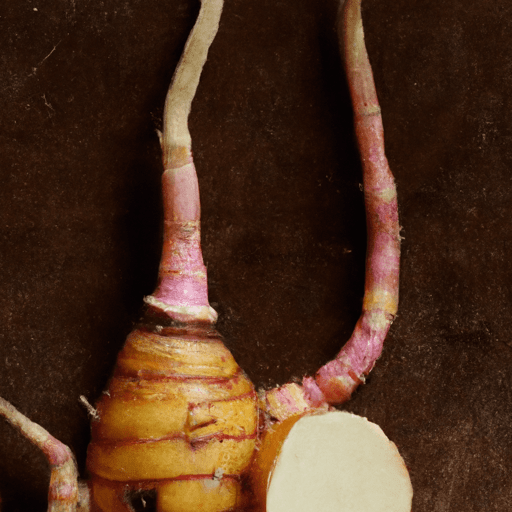A Culinary Delight: Exploring the World of Shrimp Paste
If you’re a culinary adventurer, then you’ve undoubtedly encountered the magical ingredient that is shrimp paste. Bursting with flavor and boasting a rich culinary history, shrimp paste is a staple in many Southeast Asian cuisines. In this blog post, we dive into the delectable world of this unique ingredient, exploring its taste, common uses in cooking, nutritional value, and fascinating history. So, grab your apron and let’s embark on this savory journey!
Unraveling the Taste of Shrimp Paste
Shrimp paste, often referred to as belacan in Malaysia and terasi in Indonesia, is a pungent condiment made from fermented shrimp. The paste is created by grinding salted shrimp and allowing it to undergo a natural fermentation process. This technique intensifies the flavors, giving shrimp paste its signature taste.
Shrimp paste takes on a complex and distinct flavor profile. It possesses a strong umami taste, which is the savory flavor found in foods like mushrooms and soy sauce. The paste is also notably salty, lending a depth of flavor to dishes. Beyond its primary characteristics, shrimp paste offers subtle hints of sweetness and a delightful aroma that can elevate any recipe.
Versatile Uses in Cooking
Shrimp paste is widely used as a flavor enhancer in various dishes. Its remarkable taste and aroma make it a secret weapon in many Southeast Asian recipes. Here are some popular applications:
1. Stir-Fries and Curries
In Southeast Asian cuisine, shrimp paste is often added to stir-fried dishes and curries to infuse them with a robust umami flavor. As the paste caramelizes in the heat, it imparts a unique smokiness that elevates the overall taste of the dish. Whether it’s a Thai shrimp stir-fry or a Malaysian rendang curry, shrimp paste adds a punch of irresistible flavor.
2. Dipping Sauces
Shrimp paste forms the foundation of several mouthwatering dipping sauces. By combining the paste with lime juice, sugar, chili, and herbs, you can create a delightful sauce that complements various grilled meats, seafood, or fresh vegetables. In Vietnamese cuisine, this type of dipping sauce, known as “nước mắm,” is a staple on many tables.
3. Marinades and Soups
Due to its strong flavor, shrimp paste makes an ideal ingredient for marinades. It adds depth and complexity to meat, fish, or tofu when mixed with other complementary ingredients. Furthermore, shrimp paste serves as a fantastic base for flavorful broths and stocks in traditional dishes like laksa or tom yum soup.
Nutritional Value and Health Benefits
Apart from being a flavor powerhouse, shrimp paste also offers nutritional benefits. Although it is used in smaller amounts, it still contributes to the overall nutritional composition of a dish. Here are some key aspects:
Protein: Shrimp paste contains a decent amount of protein, making it a suitable choice for those seeking additional protein in their diet.
Minerals: This condiment is rich in essential minerals such as calcium, iron, and potassium. These minerals play a vital role in various bodily functions.
Vitamins: While the fermentation process may slightly diminish some vitamins, shrimp paste still retains trace amounts of vitamins B and C.
It’s worth mentioning that shrimp paste can be high in sodium, so moderation is key, especially for individuals with certain health concerns.
A Glimpse into History
The use of fermented shrimp as a condiment can be traced back centuries. Shrimp paste first emerged in Southeast Asia and has since become a culinary cornerstone in the region’s cuisines. Its popularity spread as trade routes connected different parts of the world.
Throughout history, shrimp paste has been hailed for its ability to preserve the catch of the day and provide a concentrated source of flavor in dishes. Its versatility, long shelf life, and distinct taste have solidified its position as a beloved ingredient in traditional Southeast Asian cooking.
Conclusion
Shrimp paste is a remarkable ingredient that brings a world of flavor to any dish it graces. Its umami-packed taste, diverse uses in cooking, and nutritional benefits make it a must-have in your culinary arsenal. The next time you’re feeling adventurous in the kitchen, give shrimp paste a try and experience the wonders of this timeless Southeast Asian delicacy. Stay bold, stay curious, and happy cooking!
Shrimp Paste
Origin: Shrimp paste, also known as belacan, is a traditional condiment that originated in Southeast Asia. It is commonly used in Malaysian, Indonesian, Thai, and Vietnamese cuisines.
Common Uses: Shrimp paste is commonly used as a seasoning or flavor enhancer in various dishes. It is often used in curries, stir-fries, and sambal (a spicy chili sauce) to add a unique umami flavor. It is also a key ingredient in dishes like laksa and rendang.
Nutritional Benefits: Shrimp paste contains essential nutrients including protein, calcium, iron, phosphorus, and vitamin B12. However, it is important to note that the nutritional value and benefits can vary depending on the brand and preparation method.
Unique Properties: Shrimp paste has a strong and distinctive aroma due to the fermentation process. It is made by salting and fermenting shrimp, which gives it a rich, savory umami flavor. The color can range from light pink to dark brown depending on the ingredients and regional variations.
Historical Significance: Shrimp paste has been used in Southeast Asian cuisines for centuries and has a long history in the region. The fermentation process used to make shrimp paste can be traced back to ancient times, making it an integral part of traditional cooking.
Please note that while shrimp paste can add depth of flavor to many dishes, it may not be suitable for individuals with shellfish allergies or dietary restrictions. It is always important to read labels and seek medical advice if you have any concerns.




Use the share button below if you liked it.
It makes me smile, when I see it.